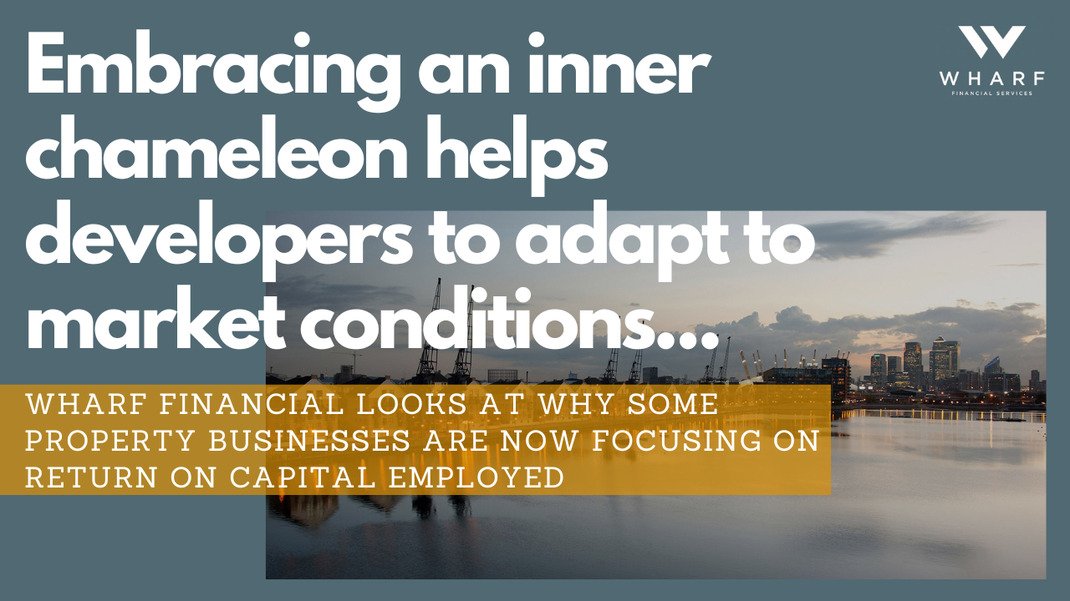
Embracing an inner chameleon helps developers to continually adapt to market conditions, but in today’s climate should property investors and developers change how they measure a successful project? With the help of Brickflow, Wharf Financial looks at why some property businesses are now focusing on Return on Capital Employed (ROCE) rather than profitability.
In today’s climate, more and more developers are considering their Return on Capital Employed (ROCE) above profit generated. If we compare two identical scenarios, one without pre-construction bridging finance and one with, the latter, whilst having a lower profit, has nearly double the ROCE rate and uses less than half of the amount of equity. Through Brickfllow’s excellent research, Wharf has recently heard that the UK’s second-largest developer has now moved to a ROCE model rather than profitability; something that we have been advocating since we struck up a partnership with Brickflow.
According to Vistry Group PLC’s (a partnership between Countryside Partnerships and Vistry Housebuilding) Annual Report, central to their partnerships strategy is ROCE targets of 40% or higher. The report states that ‘historically Countryside has not prioritised ROCE resulting in a level below our 40% target’ but they are now focusing on achieving that target on every build. By increasing the proportion of pre-sold revenues on numerous sites, particularly the more capital intensive high-rise developments in London, they are better able to drive ROCE towards their target. Every new development undertaken by the Vistry Group Partnerships now uses ROCE as a key metric, with a 40% minimum hurdle.
In the same way that a financial advisor would tell their clients to spread their investments over several stocks/shares/assets rather than just one, property investors and developers should be thinking along the same lines. By focusing on ROCE rather than profit, equity can be spread further and property businesses can scale sooner.
If the big development businesses are now using ROCE as a key metric to manage a scheme, then SMEs should follow suit. To help developers with this, Wharf’s development finance tool, powered by Brickflow, displays project ROCE next to every lender on the results screen.
For more information please visit www.wharffinancial.co.uk